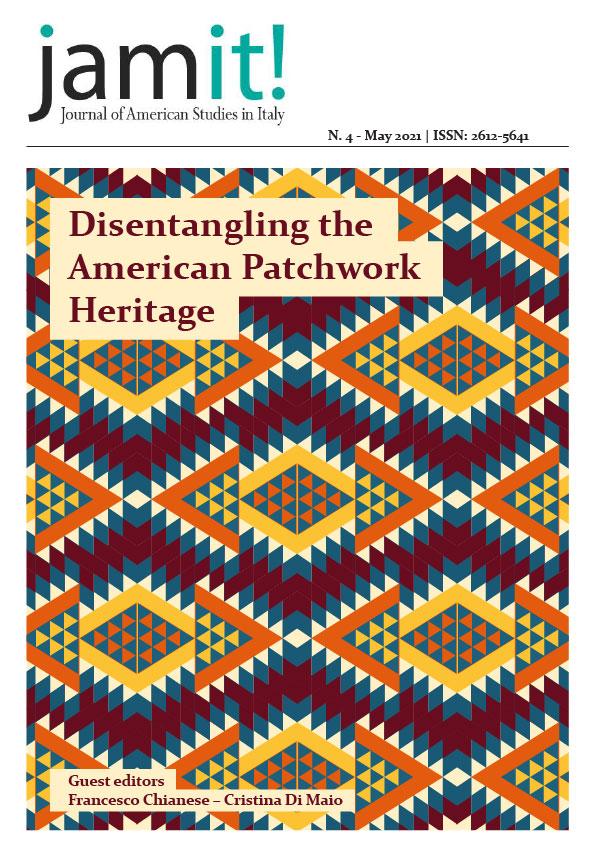Persephone's Descent
Place, Race, and Diasporic Self-Fashioning in The Skin Between Us
DOI :
https://doi.org/10.13135/2612-5641/5287Mots-clés :
Ragusa, The Skin Between Us, diaspora, Italian-American, African-American, gender, Persephone, third space, migrant sitesRésumé
This essay argues that The Skin Between Us (2006), Kym Ragusa's memoir of her upbringing as the daughter of an African-American fashion model and a working-class southern Italian father, writes beyond a patchwork heritage account of multiracial, multicultural identity. The book's cover, which features white hands folded into and over black hands, is misleading, as the memoir underscores how racial difference complicates ethnic affiliations. Tensions between Ragusa's two families are never resolved, nor is Kym ever fully accepted by her Italian-American grandmother, from whom her birth had been kept a secret by her father for years. The Skin Between Us is less the narration of an identity quest than it is a reflection on its transformation through writing: the hybridity Ragusa celebrates, the cross-cultural connections she makes between her Italian-American and her African-American female ancestors, are products of a journey of memory that is associated with Persephone’s descent at the end of the book.
Since place plays a crucial role in Ragusa’s project of self-fashioning, I use Kandiyoti’s notion of “migrant sites,” as well as Homi Bhabha’s notion of a Third Space, to explain how Ragusa creates diasporic alternatives to the patchwork heritage narrative. Arguing for the centrality of place in diaspora narratives, Kandiyoti uses the term “migrant sites” to refer to an irreconcilable tension between enclosure, “the confinement and containment of ethnoracialized diaspora populations in bordered areas” and translocality, “a sense of place produced by the imagining of overlapping locales.” While Harlem functions as a migrant site in Ragusa’s memoir, Sicily is represented as a third space of hybridity, one that permits the autobiographer to map affinities between Italian and African diasporas and reconstitute her relationship with each. Ragusa mobilizes cross-cultural identifications through gender, linking women on both sides of her family through their experience of patriarchal violence as well as through the myth of Demeter and Persephone, whose separation and reunion resonates with the experience of migration and resettlement of women across various diasporas. Displacement and the desire to recuperate losses incurred by migration through storytelling constitute the "shared skin" or common heritage of African-American and Italian-American women.
Téléchargements
Publiée
Numéro
Rubrique
Licence
Authors who publish with this journal agree to the following terms:
- Authors retain the copyright and full publishing rights for their submissions to the journal.
- Authors grant the journal right of first publication with the work simultaneously licensed under a Creative Commons Attribution-NonCommercial-NoDerivatives 4.0 International License that allows others to share unedited work for non-commercial purposes with an acknowledgement of the work's authorship and initial publication in this journal.
- Authors are able to enter into separate, additional contractual arrangements for the non-exclusive distribution of the journal's published version of the work (e.g., post it to an institutional repository or publish it in a book), with an acknowledgement of its initial publication in this journal.
- Authors are permitted and encouraged to post their work online (e.g., in institutional repositories or on their website) prior to and during the submission process, as it can lead to productive exchanges, as well as earlier and greater citation of published work (See The Effect of Open Access).




